- Why Are My Sweet Peppers Turning Yellow and Not Growing?
- Lack of sunlight:
- Poor soil conditions:
- Overwatering or underwatering:
- Pest infestation:
- Disease:
- Temperature extremes:
- Incorrect variety selection:
- Improper pollination:
- Lack of Nutrients
- Incorrect Watering
- 1. Over-watering
- 2. Under-watering
- 3. Consistent Watering Schedule
- 4. Leaf Hydration
- Pest Infestation
- Disease
- Improper Pollination
- Extreme Temperature
- Hot temperatures
- Cold temperatures
- Overcrowding
- Improper Pruning
- “Question-Answer”
- Why are my sweet peppers turning yellow?
- What can I do to fix my yellow sweet peppers?
- Why are my sweet peppers not growing?
- How can I promote the growth of my sweet peppers?
- Can extreme temperatures affect sweet pepper growth?
- How can I prevent sweet peppers from turning yellow?
- What are some common pests that can affect sweet pepper plants?
- “Video” Nutrient-Deficient (Yellowing Leaves) Pepper Fix – This Week In the Garden
Are you having trouble growing sweet peppers in your garden? Have you noticed that your peppers are turning yellow instead of ripening to a vibrant red, orange, or green color? Don’t worry, you’re not alone. Many gardeners face this problem and it can be frustrating. However, there are several factors that can contribute to this issue and solutions to fix it.
One possible reason for the yellowing of sweet peppers is improper watering. Peppers require consistent moisture to thrive, but overwatering can lead to yellowing and stunted growth. On the other hand, under watering can also cause the same problem. It’s important to strike a balance and ensure that your peppers are receiving an adequate amount of water without drowning them.
Another factor to consider is nutrient deficiency. Sweet peppers need certain nutrients, such as nitrogen, phosphorus, and potassium, to grow properly. If your soil lacks these essential nutrients, it can result in yellowing and poor growth. Testing your soil and adding appropriate fertilizers can help address this issue.
Pests and diseases can also be the culprits behind yellow sweet peppers. Aphids, spider mites, and other pests can damage the plants and cause wilting or yellowing. Additionally, diseases like pepper mosaic virus and bacterial spot can affect the growth and color of the peppers. Proper pest control measures and regular inspection can help prevent and manage these problems.
In conclusion, yellowing and stunted growth in sweet peppers can be attributed to several factors such as improper watering, nutrient deficiency, pests, and diseases. By addressing these issues and making necessary adjustments, you can get your sweet peppers back on track to growing healthy and vibrant.
Why Are My Sweet Peppers Turning Yellow and Not Growing?
If you’re noticing that your sweet peppers are turning yellow and not growing, there could be a few different factors at play. Here are some common reasons why this may be happening:
Lack of sunlight:
Sweet peppers need plenty of sunlight to thrive and produce healthy fruit. If they are not getting enough sunlight, their growth can be stunted and their peppers may turn yellow. Make sure that your plants are receiving at least 6-8 hours of direct sunlight each day.
Poor soil conditions:
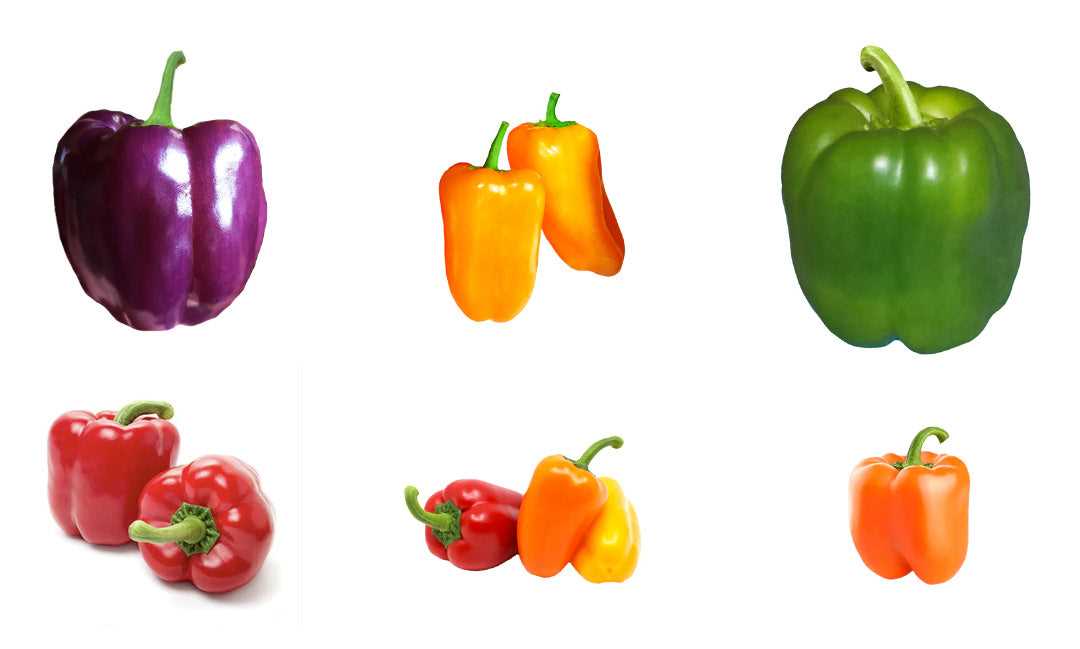
The quality and nutrient content of the soil can greatly impact the growth of sweet peppers. If the soil is lacking essential nutrients, the plants may not be able to grow properly and their peppers may turn yellow. Test your soil and amend it with compost or fertilizer if needed.
Overwatering or underwatering:
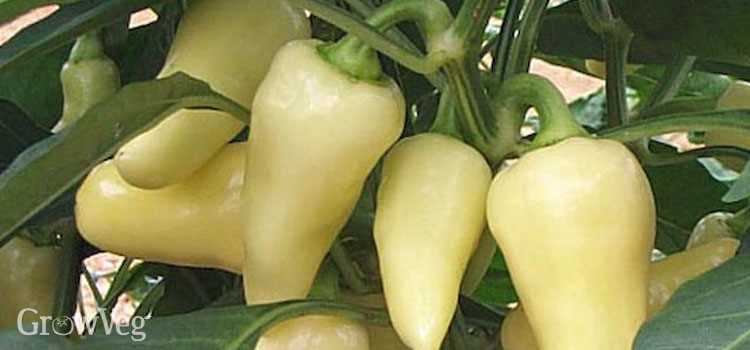
Proper watering is crucial for the health of sweet pepper plants. Overwatering can cause root rot, while underwatering can lead to stress and nutrient deficiencies. Ensure that your plants are receiving a consistent amount of water, and allow the soil to dry slightly between waterings.
Pest infestation:
Some pests, such as aphids or spider mites, can attack sweet pepper plants and cause them to yellow and stop growing. Inspect your plants regularly for signs of pest infestation, such as visible insects or webbing. Use organic pest control methods to eliminate the pests and protect your plants.
Disease:
Sweet peppers can be susceptible to various diseases, such as bacterial leaf spot or powdery mildew. These diseases can cause the leaves to yellow and can inhibit the growth of the peppers. Proper sanitation and good plant hygiene are important in preventing and controlling diseases. Remove any infected leaves or plants and apply appropriate fungicides if necessary.
Temperature extremes:
If sweet pepper plants are exposed to extreme temperatures, such as frost or excessive heat, their growth can be affected. Yellowing of the peppers can be a sign of stress due to temperature extremes. Protect your plants from frost with covers and provide shade during heat waves to help them thrive.
Incorrect variety selection:
It’s important to choose the right variety of sweet pepper for your specific growing conditions. Some varieties are more suited to warmer climates, while others prefer cooler temperatures. Make sure you’re growing a variety that is appropriate for your region to avoid issues with growth and fruit development.
Improper pollination:
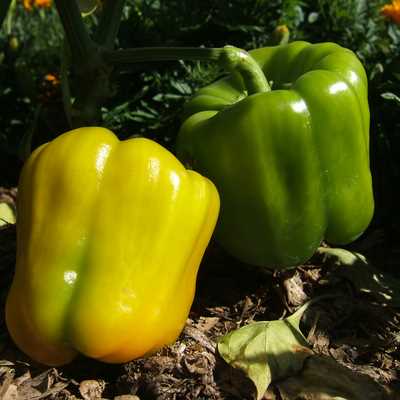
Sweet peppers require pollination in order for their fruit to develop properly. If your plants are not being pollinated, their peppers may not grow or may turn yellow. Encourage pollination by attracting pollinators to your garden, such as bees or butterflies, or manually pollinate the flowers using a small brush.
By addressing these potential causes and making the necessary adjustments, you can help your sweet peppers to grow healthy and vibrant, ensuring a bountiful harvest of delicious peppers.
Lack of Nutrients
If your sweet peppers are turning yellow and not growing, it could be due to a lack of nutrients in the soil. Sweet peppers require a balanced blend of nutrients to thrive and produce healthy fruit. Here are some key nutrients that may be lacking:
- Nitrogen: A lack of nitrogen can lead to stunted growth and pale yellow leaves. Nitrogen is essential for lush foliage and overall plant development. Consider adding a nitrogen-rich fertilizer or organic compost to the soil to boost nitrogen levels.
- Phosphorus: Inadequate phosphorus levels can cause slow growth and yellowing of leaves. Phosphorus is crucial for root development and flowering. Adding a phosphorus-rich fertilizer or bone meal can help address this deficiency.
- Potassium: Insufficient potassium can result in yellowed leaves, weak stems, and poor fruit development. Potassium is important for overall plant health, disease resistance, and fruit formation. Apply a potassium-rich fertilizer or wood ash to improve potassium levels in the soil.
In addition to these macronutrients, sweet peppers also require micronutrients such as calcium, magnesium, and iron. A lack of these micronutrients can manifest as yellowing leaves or slow growth.
To identify nutrient deficiencies accurately, it is recommended to conduct a soil test. This will help determine the exact nutrient levels in your soil and guide you in selecting the appropriate fertilizers or amendments to address the deficiencies.
Incorporating organic matter, such as compost, into the soil can also help improve nutrient availability and soil structure over time.
| Nutrient Deficiency | Visual Symptoms | Remedies |
|---|---|---|
| Nitrogen | Pale yellow leaves, stunted growth | Add nitrogen-rich fertilizer or compost |
| Phosphorus | Slow growth, yellowing leaves | Apply phosphorus-rich fertilizer or bone meal |
| Potassium | Yellow leaves, weak stems, poor fruit development | Use potassium-rich fertilizer or wood ash |
| Calcium | Blossom end rot, weakened stems | Add calcium-rich fertilizer or lime |
| Magnesium | Yellowing of older leaves | Apply magnesium-rich fertilizer or Epsom salt |
| Iron | Yellowing leaves with green veins | Use iron-rich fertilizer or iron chelate |
Remember to follow the recommended dosages and application instructions when using fertilizers or soil amendments, as excessive use can lead to nutrient imbalances or plant damage.
By addressing nutrient deficiencies and providing the necessary elements for healthy growth, you can help your sweet peppers regain their vibrant green color and produce bountiful harvests.
Incorrect Watering
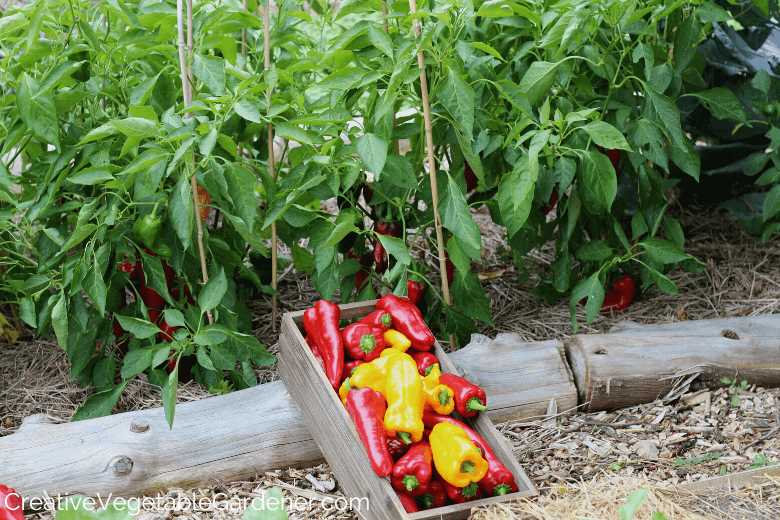
One possible reason why your sweet peppers are turning yellow and not growing properly could be incorrect watering. Sweet peppers require a consistent and appropriate amount of water to thrive. Over-watering or under-watering can both lead to yellowing and stunted growth.
1. Over-watering
Over-watering can cause the roots of the sweet pepper plant to become waterlogged, leading to a lack of oxygen and nutrient uptake. This can result in yellowing leaves and slowed growth. To avoid over-watering, make sure to provide proper drainage for your peppers by using well-draining soil and containers with drainage holes. Additionally, only water your sweet peppers when the top inch of soil feels dry to the touch.
2. Under-watering
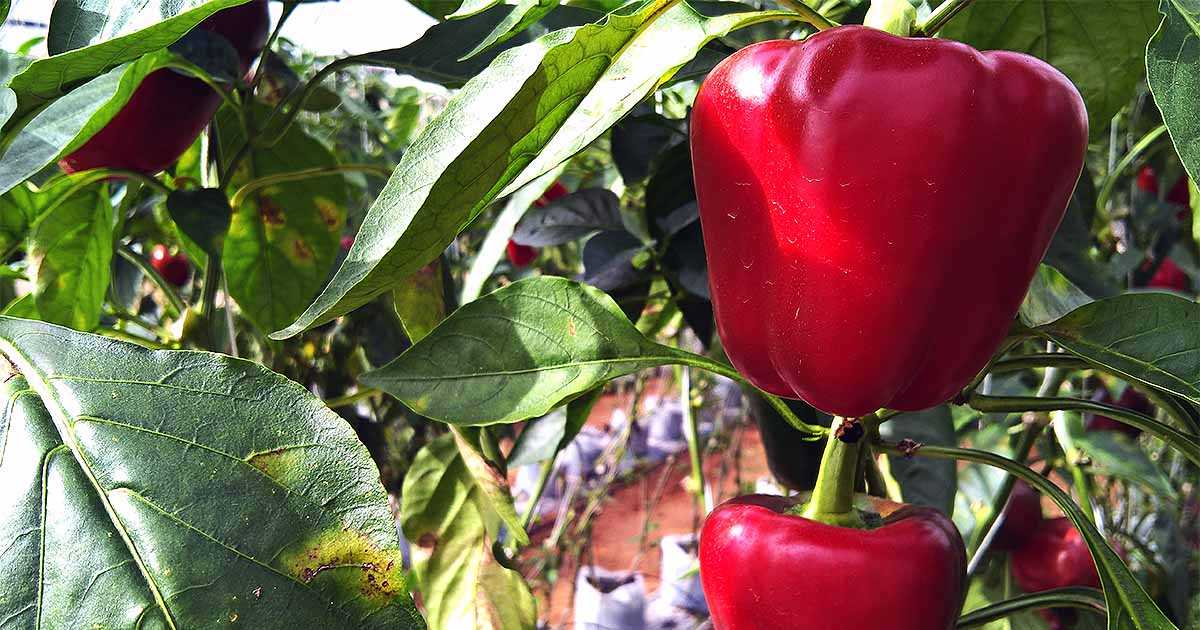
On the other hand, under-watering can also cause yellowing of the leaves and hinder the growth of sweet peppers. When plants do not receive enough water, they can become stressed and unable to take in nutrients efficiently. To ensure your sweet peppers receive enough water, water deeply and thoroughly, allowing the water to penetrate the root zone. Mulching around the plants can also help retain moisture in the soil.
3. Consistent Watering Schedule
Providing a consistent watering schedule is essential for the healthy growth of sweet peppers. Rather than sporadically watering, establish a regular watering routine. This will prevent the plant from experiencing drastic changes in water availability and stress. Take note of the individual needs of your sweet peppers, as factors such as the size of the pot, the temperature, and the weather conditions can affect their water requirements.
4. Leaf Hydration
When watering your sweet peppers, it’s important to focus on the base of the plant and avoid wetting the foliage. Wet leaves can lead to fungal diseases, such as powdery mildew, which can further hinder the growth of the plant. Use a watering can or a drip irrigation system to directly water the soil around the plant’s base.
By ensuring correct watering practices, you can help prevent yellowing and promote healthy growth in your sweet peppers.
Pest Infestation
Pest infestations can also cause sweet peppers to turn yellow and stunt their growth. Common pests that can attack sweet peppers include:
- Aphids: These small insects feed on the leaves and stems of sweet pepper plants, sucking out the sap and causing the leaves to curl and turn yellow.
- Thrips: Thrips are tiny, winged insects that can cause yellow discoloration and stunted growth in sweet peppers. They feed by puncturing the plant cells and sucking out the contents.
- Spider mites: These tiny pests can be difficult to see with the naked eye, but their damage is noticeable. They feed on the undersides of the leaves, causing yellow spots and webbing.
- Whiteflies: Whiteflies are small, flying insects that feed on the underside of the leaves. They suck out the sap, causing the leaves to turn yellow and dry out.
- Leaf miners: These insects lay eggs on the leaves, and the larvae tunnel through the leaf tissue, causing yellow and white trails. This damage can inhibit the growth of sweet peppers.
If you suspect a pest infestation on your sweet pepper plants, it is important to take action promptly to prevent further damage. Here are some tips to control pest infestations:
- Monitor your plants: Regularly inspect your sweet pepper plants for signs of pests. Look for yellowing leaves, wilting, or unusual spots.
- Spray with insecticidal soap: Insecticidal soaps can be effective in controlling pests like aphids, thrips, and spider mites. Make sure to follow the instructions on the product label.
- Introduce beneficial insects: Some insects, like ladybugs and lacewings, feed on common pests. Introducing these beneficial insects to your garden can help control the pest population naturally.
- Remove heavily infested plants: If a plant is heavily infested and cannot be effectively treated, it may be best to remove it to prevent the infestation from spreading to other plants.
- Practice good plant hygiene: Keep the area around your sweet pepper plants clean and free from debris. Remove any dead or damaged plant material to reduce pest habitat.
By addressing pest infestations promptly, you can help ensure healthy growth and vibrant green sweet peppers.
Disease
- Viral diseases: Sweet peppers can be affected by various viral diseases, such as tobacco mosaic virus, cucumber mosaic virus, and potato virus Y. These viruses can be transmitted through infected plants, insects, or contaminated tools. Symptoms of viral diseases include yellowing leaves, stunted growth, and distorted fruit. There is no cure for viral diseases, so it is important to prevent their spread by practicing good sanitation and using disease-resistant varieties.
- Bacterial diseases: Bacterial diseases like bacterial leaf spot and bacterial leaf blight can also cause yellowing of sweet pepper plants. These diseases are usually characterized by the appearance of dark water-soaked spots on the leaves and fruit. To manage bacterial diseases, it is important to remove and destroy infected plants, practice crop rotation, and avoid overhead irrigation.
- Fungal diseases: Fungal diseases such as powdery mildew, early blight, and late blight can also cause yellowing and poor growth in sweet peppers. Powdery mildew appears as a white powdery growth on the leaves, while blights cause dark lesions and rotting of the fruit. Fungal diseases can be managed by maintaining good air circulation, watering at the base of the plants, and using fungicides if necessary.
- Nutrient deficiencies: Inadequate nutrient levels, especially nitrogen, can lead to yellowing of the leaves and stunted growth in sweet peppers. Regularly monitor soil nutrient levels and provide appropriate fertilization to ensure healthy plant growth. Nutrient deficiencies can often be corrected by applying a balanced fertilizer or supplementing with organic matter.
If your sweet peppers are showing signs of disease, it is important to identify the specific condition and take appropriate measures to prevent its spread. Consult with a local agricultural extension service or experienced gardener for assistance in diagnosing and managing the problem.
Improper Pollination
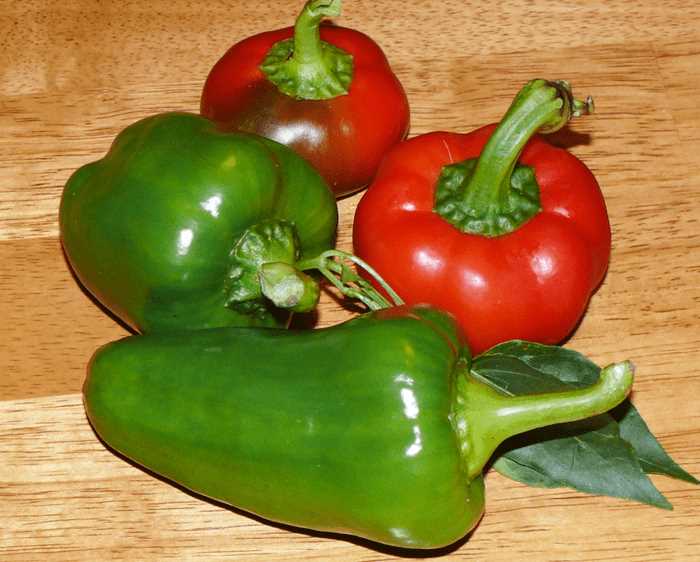
One possible reason for your sweet peppers turning yellow and not growing is improper pollination. Sweet peppers, like other plants, rely on pollination to produce fruit. Pollination occurs when pollen from the male parts of the plant (stamen) is transferred to the female parts (pistil) to fertilize the ovaries and initiate fruit development. Without successful pollination, the pepper plants will not produce fruit or will produce misshapen and underdeveloped fruits.
There are several factors that can lead to improper pollination in sweet peppers:
- Lack of pollinators: Bees and other pollinators play a crucial role in transferring pollen between flowers. If there is a lack of pollinators in your garden, the sweet pepper plants may not receive enough pollen for successful pollination. Consider planting pollinator-friendly flowers nearby to attract more bees and other beneficial insects.
- Poor weather conditions: Unfavorable weather conditions, such as excessive heat, high humidity, or heavy rainfall, can interfere with pollination. For example, excessive heat can cause the pollen to become non-viable, while heavy rainfall can wash away the pollen before it has a chance to reach the pistil. Providing some shade or using row covers during extreme weather conditions can help protect the flowers and improve pollination.
- Low flower density: If there are not enough flowers on the pepper plants, the chances of successful pollination and fruit set are reduced. Ensure that your plants are healthy and have an adequate number of flowers. Consider enriching the soil with organic matter and providing proper nutrition to promote strong flower production.
To encourage proper pollination in sweet peppers, you can also try hand-pollinating the flowers. Gently transfer the pollen from the stamen to the pistil using a small brush or cotton swab. This can help ensure that the flowers are successfully pollinated and increase the chances of fruit development.
By addressing the issue of improper pollination, you can help your sweet pepper plants produce healthy, fully developed fruits.
Extreme Temperature
Extreme temperature can have a significant impact on the growth and health of sweet peppers. Both hot and cold temperatures can cause yellowing and stunted growth in pepper plants.
Hot temperatures
Excessive heat can cause sweet pepper plants to become stressed, resulting in yellowing leaves and minimal fruit production. When temperatures rise above 90°F (32°C), sweet pepper plants may struggle to transpire properly, leading to wilting and yellowing. Additionally, high temperatures can prevent proper flower pollination, leading to a decrease in fruit set.
To mitigate the effects of extreme heat:
- Provide shade: Use shade cloth or plant tall crops to provide shade for the pepper plants during the hottest part of the day.
- Mulch: Apply a layer of organic mulch around the pepper plants to keep the soil cool and retain moisture.
- Water regularly: Ensure that the pepper plants receive consistent moisture to compensate for the increased evaporation in hot temperatures.
- Mist the foliage: Spraying a fine mist of water on the leaves can help cool down the plants and increase humidity around them.
Cold temperatures
Sweet peppers are warm-season plants and are sensitive to cold temperatures. Exposure to temperatures below 50°F (10°C) can cause yellowing and stunted growth. Frost is particularly damaging to sweet pepper plants, leading to wilting and even death.
To protect sweet pepper plants from cold temperatures:
- Cover the plants: Use row covers or individual plant covers to protect the peppers from frost and cold winds.
- Choose appropriate planting dates: Plant sweet peppers after the danger of frost has passed and temperatures have warmed up.
- Warm the soil: Use black plastic mulch or cloche covers to warm the soil before planting.
- Provide additional heat: Use protective structures, such as hoop houses or greenhouses, to provide extra warmth for the pepper plants.
By taking appropriate measures to protect sweet pepper plants from extreme temperatures, you can help ensure their healthy growth and maximize fruit production.
Overcrowding
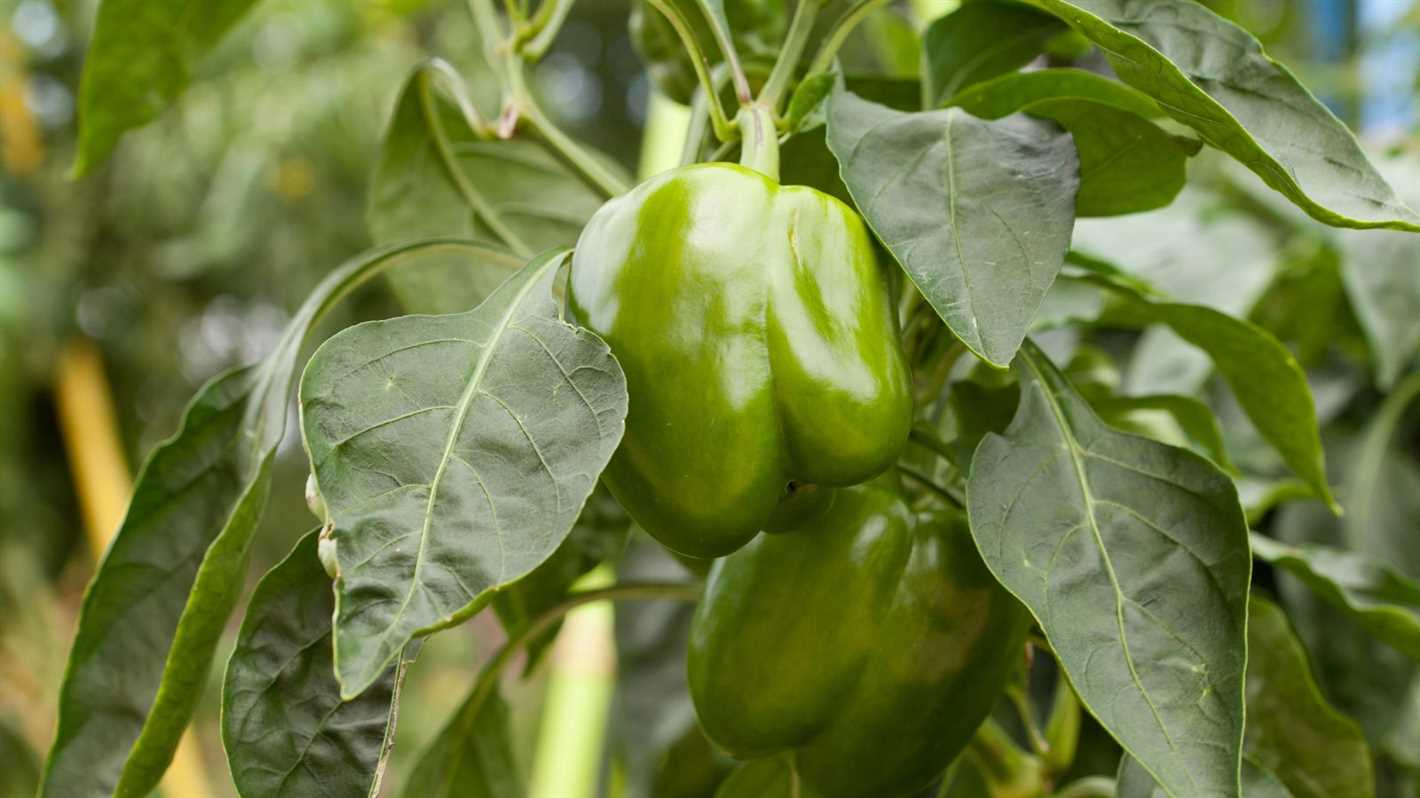
Overcrowding can be a common issue when growing sweet peppers. When the plants are overcrowded, they compete for resources such as water, sunlight, and nutrients, which can result in yellowing of the leaves and stunted growth.
Signs of overcrowding include:
- Plants are closely spaced together, with their leaves touching or overlapping
- Restricted airflow between plants
- Difficulty in accessing the plants for maintenance
Effects of overcrowding:
When sweet pepper plants are overcrowded, they face several challenges:
- Limited sunlight: The leaves of nearby plants may block sunlight from reaching the lower leaves of the peppers, resulting in yellowing and weak growth.
- Inadequate air circulation: Overcrowded plants restrict the flow of air between them, creating a favorable environment for fungal diseases and pests.
- Competition for nutrients: The root systems of the plants compete for nutrients in the soil, which can lead to nutrient deficiencies and hinder growth.
- Increased humidity: Overcrowded plants can create a humid microclimate, promoting the growth of fungal diseases.
How to fix overcrowding:
If your sweet pepper plants are overcrowded, here are some steps you can take to alleviate the issue:
- Transplanting: If the plants are still small, you can carefully transplant them to a more spacious location, ensuring adequate spacing between each plant.
- Thinning: If transplanting is not an option, selectively remove some of the weaker plants to create more room for the healthiest ones to thrive.
- Pruning: Regularly prune the plants by removing excessive foliage and branches to increase air circulation and light penetration.
- Support: Provide support for the plants by using stakes or trellises, which can help keep the plants upright and create more space between them.
By addressing the issue of overcrowding, you can help your sweet pepper plants grow healthier and produce more abundant fruits.
Improper Pruning
One possible reason for yellowing and stunted growth in sweet peppers is improper pruning. Pruning is an essential gardening practice that helps shape and maintain the health of the plants. When done incorrectly, it can have negative effects on the growth and productivity of sweet peppers.
Overpruning:
- Overpruning the sweet pepper plants can lead to yellowing and stunted growth. When too many leaves and branches are removed, the plant loses its ability to photosynthesize efficiently, resulting in reduced energy production and impaired growth.
- To avoid overpruning, it is important to only remove the necessary branches and leaves for shaping and maintenance. It is recommended to remove no more than 1/3 of the plant at a time.
Improper Branch Removal:
- Removing large branches or main stems from the sweet pepper plant can disrupt the flow of nutrients and water to the fruiting branches, causing them to yellow and hinder their growth.
- When pruning, it is important to selectively remove smaller, weaker branches that are not producing fruits, rather than removing large, healthy ones.
Timing of Pruning:
- Pruning sweet pepper plants at the wrong time can also cause yellowing and stunted growth. Pruning during periods of high heat or excessive sunlight can stress the plants and hinder their ability to recover, leading to poor growth.
- It is best to prune sweet pepper plants early in the morning or late in the evening when temperatures are cooler. This allows the plants to recover and reduce the stress caused by pruning.
Proper pruning techniques can help prevent yellowing and stunted growth in sweet peppers. It is important to be mindful of the amount and timing of pruning, as well as the branches being removed. Following these guidelines will ensure healthier plants and higher yields of sweet peppers.
“Question-Answer”
Why are my sweet peppers turning yellow?
There could be several reasons for your sweet peppers turning yellow. One possible reason is nutrient deficiency, specifically a lack of nitrogen. Another reason could be overwatering, which can lead to root rot and hinder the plant’s ability to absorb nutrients. Pests or diseases such as aphids or mosaic virus can also cause yellowing of the peppers. Poor pollination or extreme temperatures can also be factors.
What can I do to fix my yellow sweet peppers?
To fix yellow sweet peppers, you first need to identify the underlying cause. If it is a nutrient deficiency, you can apply a balanced fertilizer high in nitrogen to the soil. It is important to follow the instructions on the fertilizer package. If overwatering is the issue, you should reduce the frequency of watering and ensure proper drainage. In case of pests or diseases, you may need to use organic insecticides or contact a professional for advice. Providing shade during extreme temperatures and hand-pollinating the flowers can also help.
Why are my sweet peppers not growing?
There are a few reasons why your sweet peppers may not be growing. Insufficient sunlight can be a factor, as sweet peppers require at least 6-8 hours of direct sunlight each day. Poor soil conditions, such as low fertility or improper pH levels, may also stunt the growth of the peppers. Inadequate watering or overwatering can inhibit growth as well. Additionally, overcrowding of plants and lack of proper spacing can limit the growth potential of sweet peppers.
How can I promote the growth of my sweet peppers?
To promote the growth of sweet peppers, you can take several measures. First, ensure that they receive enough sunlight by planting them in a location with at least 6-8 hours of direct sunlight daily. Preparing the soil properly by adding organic matter and maintaining a pH level of 6-6.5 will also help. Water the plants consistently, keeping the soil evenly moist but not waterlogged. Proper spacing between plants and regular removal of weeds will allow each pepper plant to have enough space to grow. Fertilizing with a balanced fertilizer high in phosphorus and potassium can also stimulate growth.
Can extreme temperatures affect sweet pepper growth?
Yes, extreme temperatures can affect sweet pepper growth. High temperatures above 90°F (32°C) can cause flower drop and hinder fruit development. Low temperatures below 55°F (12.7°C) can slow down growth and lead to yellowing leaves. It is important to provide shade during hot days and protect the plants from cold temperatures by using row covers or other protective measures. Growing sweet peppers in a greenhouse or using container gardening methods can also help regulate temperature and optimize growth.
How can I prevent sweet peppers from turning yellow?
To prevent sweet peppers from turning yellow, you can take certain precautions. Providing adequate nutrients by fertilizing regularly with a balanced fertilizer will help the plants stay healthy. Avoid overwatering and ensure proper drainage to prevent root rot. Monitor the plants for pests and diseases and take appropriate measures to control them. Providing shade during extreme temperatures and hand-pollinating the flowers can also prevent yellowing. Proper spacing between plants and maintaining optimal growing conditions will promote healthy growth and prevent the peppers from turning yellow.
What are some common pests that can affect sweet pepper plants?
Some common pests that can affect sweet pepper plants include aphids, thrips, whiteflies, and pepper maggots. Aphids are small insects that suck sap from the plant, causing stunted growth and yellowing leaves. Thrips feed on the plants by piercing the surface and sucking plant juices, resulting in curled leaves. Whiteflies are tiny white insects that infest the underside of leaves, causing yellowing and loss of vigor. Pepper maggots are the larvae of the seedcorn maggot, and they feed on the pepper fruits, causing them to rot. Regular monitoring and use of organic insecticides can help control these pests.







